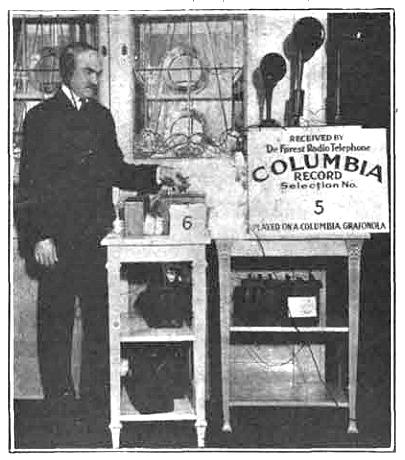
Radio Broadcasting and Its Effect on the Diversity of Music 1
Broadcasting is the act and industry of transmitting messages, programs, and programming from one sender to many receivers simultaneously. Because broadcast signals are ubiquitous, the broadcasting of music has repeatedly resulted in new music and audience connections, often thwarting attempted regulation and sometimes producing revolutions of popular music style. For instance, in the 1950s United States, many White teenagers discovered rhythm and blues by listening to "Black appeal" radio stations. This "discovery" produced a mass audience through which rhythm and blues/rock and roll changed popular music.
Music has played a crucial role in broadcasting from its beginnings. Many of the first broadcasts were of phonograph records. Though music made up much of the radio programming in the pre-television era, music has dominated radio since television took over as the primary mass medium of drama. In the pre-television period, the broadcast of recorded music was relatively rare compared to its ubiquity today. The broadcast of live music had higher status. The primary radio stations and networks with the facilities for their own orchestras, stage or dance bands, or remote broadcasts from concert halls and nightclubs used these opportunities to promote their status.
Here is a video of "Uncle Dave Macon" at the Grand Ole Opry, which started in 1925 as a barn dance show on WSM radio in Nashville, Tennessee. Gradually, however, beginning in the 1940s, radio stations returned to broadcasting records as they slowly phased out live performances in their stations.

Uncle Dave Macon - "Take Me Back To My Old Carolina Home" [ 00:00-00:00 ]
Several conditions mark the relationship between radio and the diversity of music played. First, radio systems with a limited number of channels will almost inevitably feature less musical diversity. In the late 1920s and early 1930s, the U.S. radio system shifted from programming that originated locally to network programming, with a concomitant decrease in music diversity. As the networks moved their advertising and programming to television in the 1950s, the U.S. radio system shifted back to local programming. It began targeting previously overlooked audiences, with a corresponding increase in musical diversity leading to the national breakthrough of rhythm and blues/rock and roll (Barlow 1999; Fornatale and Mills 1980; Ennis 1992; Kloosterman and Quispe 1990; Peterson 1990). Subsequently, Radio Luxembourg and offshore pirate stations provided programming alternatives to state-operated systems in Europe (Barnard 1989; Chapman 1992).
A second contingency involves the place of programming decision-making. When local stations air network or syndicated programming, they defer many programming decisions to centralized groups frequently located in national cultural centers. This deferral reduces the overall number of decision-makers within the system and reduces the diversity of influences on decision-makers. Similarly, when station programmers defer to national consultants and base their programming on national charts, their programming becomes highly standardized.
Third, the source of radio funding is essential to music programming. U.S. commercial radio networks depended on national advertising money from the outset, which led them to construct national audiences from individuals in varied geographical, cultural, and social situations. They, therefore, gave more air time to mainstream musical variety shows and live musical performances from prestigious clubs in major cities. Early examples of programming that targeted ethnic minorities-such as programs featuring African American musicians in Chicago and other urban centers-were strictly local and depended on local advertising revenues (see, for example, Barlow 1999, 25; Barnouw 1966, 130).
Elvis Presley's "Hound Dog"
The lyrics are about the animal "hound dog" and how it's no friend of Presley's because he's often crying, is not high class, and has never caught a rabbit.
Big Mama Thornton's "Hound Dog"
The lyrics are metaphorically about a "man," Although she refers to him as a hound dog, with lines such as "Daddy I know, you ain't no real cool cat" and "you ain't lookin' for a woman, all you're lookin' for is a home" she is speaking about a man.







